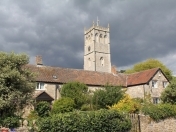Also like us on...
and Twitter Follow @BleadonTweet
Bleadon's Neighbourhood Development Planning Process
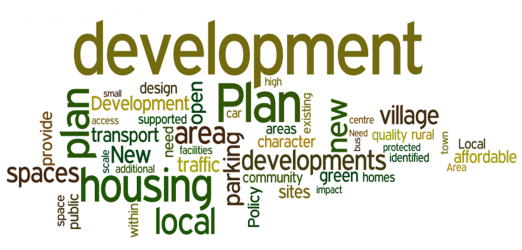
| Overview | NDP Key Stages | BPC Budget | Flow Chart | Mapping | NPPF Extracts | Documentation |
The government is continually updating its planning policies and laws, please alway refer to the current government information rather than quoting below E.g. Latest Neighbourhood Development Planning (25Sept20) and National Planning Policy Framework (19June19)
Neighbourhood Development Planning (NDP) is closely linked with the financial incentives for District and Parish Councils, i.e. New Homes Bonus and Community Infrastructure Levies. Some councils have declared their communities 'Frack Free' or 'Let Communities Decide' - Latest NDP Blog
More NDP related information can be found on BOBs additional information page, which includes information about Grants & Planners. How the NDP relates to other planning policies can be seen on the Planning Policies page. This is BOB's view and is not a definitive source of information but is aimed to help encourage you to do your own research and form your own opinions. You may also want to read BOB's annotated summary of BPC public correspondence and Blog relating to the first BPC NDP Public Open Forum in April 2018 with NDP Questions.
The following includes extracts from Government guidance on NDPs that explains how the neighbourhood planning system was introduced via the Localism Act, including key stages and considerations required. (See NALC/CPRE Guidance)
“Neighbourhood planning is not a legal requirement but a right which communities in England can choose to use. Communities may decide that they could achieve the outcomes they want to see through other planning routes [NB The Goverment Impact Assessment 2011 stated "It is assumed that neighbourhood plans that are adopted will be sufficiently robust. Neighbourhood development plan take-up assumptions range from 5% in year 1 to 55% overall coverage after 11 years". Only 200 NPs had been taken up by 2016 out of 11k+ organisations; with a 10% increase in housebuilds, 400 by 2017]
"Communities and local planning authorities should discuss the different choices communities have to achieving their ambitions for their neighbourhood" "The relationship between any group and the formal functions of the town or parish council should be transparent to the wider public ... The terms of reference for a steering group or other body should be published and the minutes of meetings made available to the public." ... more extracted information below.
An illustration of how NDPs related to/can affect planning application decisions and Appeals see the recent Sanders Fields Appeal and report, Inspector's comments include:
- BPC's "... Neighbourhood Plan is under development but at a relatively early stage with a community survey blog carried out in January 2019, followed by production of key issues and survey results (NB: large PDF) presented to the community in June 2019" (para 11):
- "The Claverham site is excluded as it is not identified in the recently adopted neighbourhood plan" (para 48); NB1: A Claverham representative "gave a clear and broad summary of the thoughts, processes and actions that Claverham had gone through in order to complete their Neighbourhood Plan" at BPC's APM in April 18 APM. It would be interesting to know why BPC did not include this site (See APM Mins)?
- NB2: Subsequently, Claverham "No affordable housing will be provided as part of the project due to Government policies on brownfield sites." (Mercury 27 Oct 20) & "Affordable housing 'will diminish due to UK planning changes'" (Guardian 06 Aug 20) and Locality Planning Reform statement (Aug 20)
- BPC's "... settlement boundaries were established in the previous Replacement Local Plan and were intended for review as part of any future local plan or Neighbourhood Development Plan (para 78)"
A Summary of the Key Stages in Neighbourhood Development Planning
[The table below shows BOB’s representation of the key steps from the above text document:
|
Step |
NDP Process | Current Stage |
| 0 ? | Discuss the different choices communities have to achieving their ambitions for their neighbourhood? | ? |
| 1 | Designating neighbourhood area and if appropriate neighbourhood forum | 27 Oct 17 |
| 2 | Preparing a draft neighbourhood plan or Order | |
| 3 | Pre-submission publicity and consultation | |
| 4 | Submission of a neighbourhood plan or Order proposal to the local planning authority | |
| 5 | Independent Examination | |
| 6/7 | Referendum and bringing the neighbourhood plan or Order into force | |
| 8 ? | Maintain the Neighbourhood Plan? | |
| 9 ? | Defend the Neighbourhood Plan? |
Bleadon Parish Council NDP Budget/Expenditure
| Document | Date | £ | Notes |
| TOTAL to date = £8,422 | |||
| BUDGET/EXPENDITURE 2018 | |||
| BPC First Grant Submission | 29 Oct 2018 | "please add any comments you may have on your site allocations here ... 5 sites ... We have only anecdotal evidence of the potential availability of sites. The call for sites and initial discussion is part of this grant application and will lead to a formal process of site appraisal in the next stage of the project 2019-2020" - What 5 undeclared Bleadon sites were suggested by BPC NDP group? | |
| BPC First Grant Letter | 02 Nov 2018 | £1,733 | Maximum grant £1,733. "First Grant: Virement - Budget & Spend - Final1 - The 'end of grant' report for the first grant has been submitted and approved. We spent £1,732 of the grant - £1 remains! Website and survey analysis = £1,003; Banners = £275; Survey booklet printing = £429; A2 maps = £25" - NDP Website Expenditure detail. |
|
BPC Budget Expenditure 2018 |
£59 |
Expenditure detail? | |
|
TOTAL |
£1,792 (Audit 2) |
||
| BUDGET/EXPENDITURE 2019 | |||
| BPC Second Grant Submission |
July 2019? Aug 2019? |
When did BPC Full Council discuss & agree this submission? How was the consultant appointed if "Ensure Working Parties understand that only the Parish Council can make decisions" (Section 4) Note 41: "Under no circumstances can we fund activity that has happened in the past, or prior to a grant being awarded. Therefore, this date should not be less than a month from the date Note 42: "Please tell us when the activities funded by this grant will end. Please note that no activity can take place later than the end of the financial year in which you submitted your application (31 March, 2020)." What 5 undeclared Bleadon sites were suggested by BPC NDP group? |
|
| BPC Second Grant Letter | 08 Aug 2019 | £4,130 | Maximum grant £4,130. Expenditure detail |
|
BPC Budget 2019? |
NDP July Mins | £2,500 | "The timeline was reviewed and updated. The spend this year to date is the printed draft (£115); printed results (£1880) and the room hire (£38) against the budget of £2,500." |
|
TOTAL |
£6,630 |
||
| DOCUMENTATION | |||
| Project Timeline | 22 Aug 2019 | "2017 ... Early discussion and awareness-raising took place throughout 2017" - what, when, outcome, public documentation? | |
| Survey Results | July 2019 | See Blog | |
|
14 Jan 2019 (Min 318.12?) |
NB Although on the Agenda (318.12) the TOR were not discussed and so remain unadopted. First (2017) & Second (2018) Terms of Reference remain unpublished by BPC despite requests. |
||
| NDP Designated Area Submission | 15 Sept 2017 | NB: "The Neighbourhood Plan will make reference to the Bleadon Parish Plan which was completed in 2009" yet 2017 - BPC Apr APM Mins (Open Forum) states that "The Clerk confirmed once more that he could not find a copy of a [adopted] Parish Plan" and that the plan was "obsolete"? | |
| Consultant (Quick) Report | Sept 2019 | ||
| Locking NDP Pros & Cons | 10 Apr 2018 | As commented on by Claverham representative Nigel Cooper | |
| GUIDANCE | |||
| NDP Guidance - Good Cllr Guide | NALC Publications and SLCC | ||
| NDP Guidance - Locaility | |||
| MINUTES | |||
| NDP Minutes |
Although the NDP project started in June 2017 the first minutes were not released until Feb 2019, backdated to Oct 2018 (quorate issues?), despite requests |
||
|
BPC NDP Agreed Minutes |
Collated information | ||
|
Public Meeting |
Apr 2018 | There has not been a specific Bleadon NDP meeting although there was a presentation by Claverham and a misrepresented vote at the BPC 2018 APM | |
|
Public Meeting |
Nov 2019 | Cancelled outside of Full Council & NDP Working Group decision making? See Blog | |
|
NDP WEBSITE |
|||
|
NDP Website - Deposit |
14 Jan 2019 |
£493+£98.60 | |
|
NDP Website Survey & Analysis |
? |
£1,003 (Budget) |
|
|
TOTAL |
? |
||
Once a community has considered its options it then proceeds to Step 1 of submitting a Deisgnated Area. Below is Purbeck District Council's (the planning authority) flow chart, which is an extract from their Guide to Neighbourhood Plans:
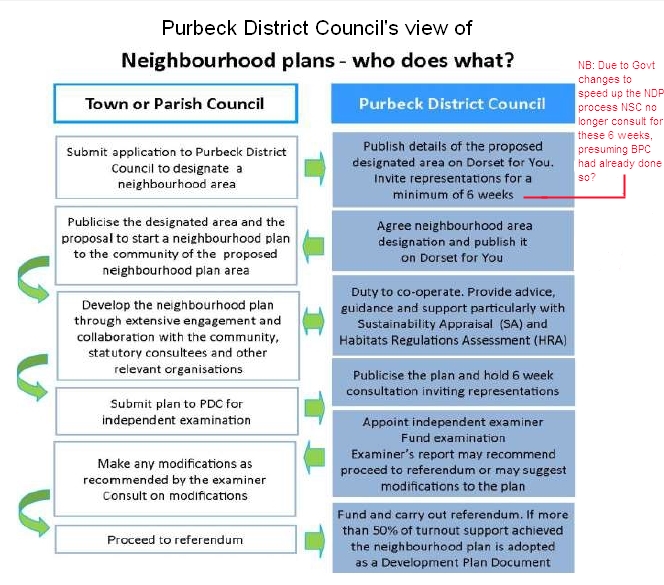
The current progress of all NSC Neighbourhood Planning and associated Neighbourhood Development Plans can be seen on the NSC website. Additional information can be found on the Neighbourhood Plans menu option on BOB.
Below is a BOB map of Neighbourhood (Development) Plans in North Somerset created by BOB 18 October 2017 (yellow in progress, green finalised and approved).
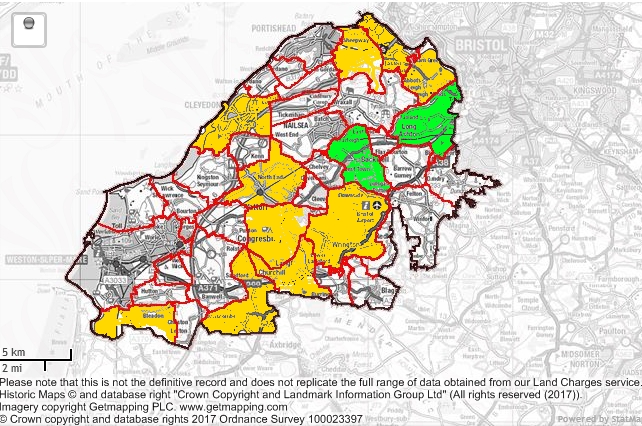
BOB's Table of Neighbourhood (Development) Plans in North Somerset created by BOB 18 Oct 17, Bleadon information updated Nov 17.
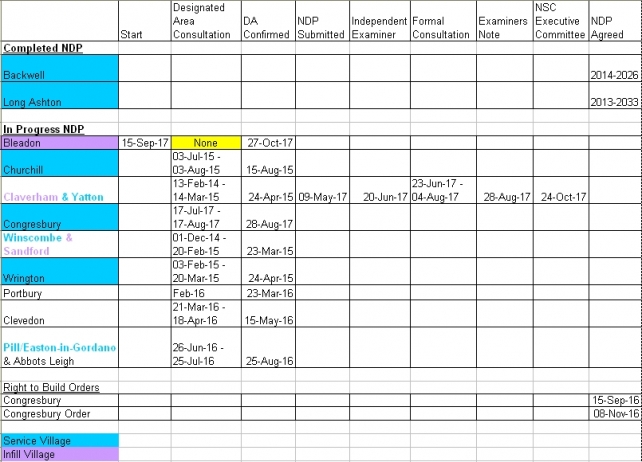
EXPANDED KEY STAGES OF IMPLEMENTING A NEIGHBOURHOOD DEVELOPMENT PLAN
Step 0: [BOB NOTE: Discuss with residents before deciding to implement a Neighbourhood Plan?
- Surely the initial step should be “Communities and local planning authorities should discuss the different choices communities have to achieving their ambitions for their neighbourhood.
- BPC started the NDP process in July 2017. They plan to hold their first public discussion meeting early in the New Year/2018”]
“Step 1: Designating neighbourhood area and if appropriate neighbourhood forum
- Relevant body (parish/town council, prospective neighbourhood forum or community organisation) submits an application to the local planning authority (LPA) to designate a neighbourhood area [BPC submit application on 15 Sept 17]
- local planning authority [NSC] publicises and consults on the area application for minimum 6 weeks (or minimum of 4 weeks where the area to which the application relates is the whole of the area of a parish council and is wholly within the area of one local planning authority) [no apparent public consultation by BPC or NSC? as given to other parishes, as seen in BOB's NDP Table above NB Govt Guidance subsequenty updated Feb 18 after BPC granted area?]
- local planning authority [NSC] designates a neighbourhood area within the statutory timescales [BPC application approved by NSC 27 Oct 17]
- In an area without a town or parish council a prospective neighbourhood forum submits an application to be the designated neighbourhood forum for a neighbourhood area
- local planning authority [NSC] publicises and consults on the forum application for minimum 6 weeks
- local planning authority [NSC] takes decision on whether to designate the neighbourhood forum
Step 2: Preparing a draft neighbourhood plan or Order
Qualifying body [BPC] develops proposals (advised or assisted by the local planning authority)
- gather baseline information and evidence
- engage and consult those living and working in the neighbourhood area and those with an interest in or affected by the proposals (eg service providers) [BPC "look to hold a meeting" with residents early 2018, the first one in this whole process? (Nov 17 Min 302.7) scheduled 9 Apr 18 BPC issue a survey 13 Jan 19]
- talk to land owners and the development industry
- identify and assess options
- determine whether a plan or an Order is likely to have significant environmental effect
- start to prepare proposals documents eg basic conditions statement
Step 3: Pre-submission publicity and consultation
The qualifying body [BPC]:
- publicises the draft plan or Order and invites representations
- consults the consultation bodies as appropriate
- sends a copy of the draft plan or Order to the local planning authority
- where European Obligations apply, complies with relevant publicity and consultation requirements
- considers consultation responses and amends plan/Order if appropriate
- prepares consultation statement and other proposal documents
Step 4: Submission of a neighbourhood plan or Order proposal to the local planning authority
- Qualifying body [BPC] submits the plan or Order proposal to the local planning authority
- Local planning authority [NSC] checks that submitted proposal complies with all relevant legislation
- If the local planning authority [NSC] finds that the plan or order meets the legal requirements it:
- publicises the proposal for minimum 6 weeks and invites representations
- notifies consultation bodies referred to in the consultation statement
- appoints an independent examiner (with the agreement of the qualifying body [BPC])
Step 5: Independent Examination
- local planning authority [NSC] sends plan/Order proposal and representation to the independent examiner
- independent examiner undertakes examination
- independent examiner issues a report to the local planning authority and qualifying body [BPC]
- local planning authority [NSC] publishes report
- local planning authority [NSC] considers report and reaches own view (save in respect of community right to build orders where the report is binding)
- local planning authority [NSC] takes the decision on whether to send the plan/Order to referendum
Steps 6 and 7: Referendum and bringing the neighbourhood plan or Order into force
- relevant council [NSC] publishes information statement
- relevant council [NSC] publishes notice of referendum/s
- polling takes place (in a business area an additional referendum is held)
- results declared
- should more than half of those voting vote in favour of the neighbourhood plan, the plan comes into force as part of the statutory development plan for the area
- should more than half of those voting vote in favour of the Order, the Order only has legal effect once it is made by the local planning authority [NSC]
- there are narrow circumstances where the local planning authority is not required to make the neighbourhood plan or Order. These are where it considers that the making of the neighbourhood plan or Order would breach, or otherwise be incompatible with, any EU or human rights obligations (see section 61E(8) of the Town and Country Planning Act 1990 Act as amended (http://www.legislation.gov.uk/ukpga/2011/20/schedule/9/enacted)).”
Step 8: [BOB NOTE: Maintain the Neighbourhood Development Plan at resident cost?
- [Review every 10 years at 70%, or every 2 years at full cost, each time, and/or review in line with NSC Local Plan changes and housing need?]
Step 9: [BOB NOTE: Defend the Neighbourhood Development Plan at resident cost?
- Defend the Neighbourhood Development Plan at appeals against developers, Planning Inspector and/or NSC decisions, etc.?]
National Planning Policy Framework (NPPF) Extracts
https://www.gov.uk/guidance/neighbourhood-planning--2
"Neighbourhood planning is not a legal requirement but a right which communities in England can choose to use. Communities may decide that they could achieve the outcomes they want to see through other planning routes [NB: Only 200 NPs had been taken up by 2016 out of 11K+ organisations; with a 10% increase in housebuilds, 400 by 2017], such as:
- incorporating their proposals for the neighbourhood into the Local Plan ,
- or through other planning mechanisms such as Local Development Orders and
- supplementary planning documents
- or through pre-application consultation on development proposals.
Communities and local planning authorities should discuss the different choices communities have to achieving their ambitions for their neighbourhood"
"What is the role of a parish or town council in neighbourhood planning?
In a designated neighbourhood area which contains all or part of the administrative area of a town or parish council, the town or parish council is responsible for neighbourhood planning.
Where a parish or town council chooses to produce a neighbourhood plan or Order it should work with other members of the community who are interested in, or affected by, the neighbourhood planning proposals to allow them to play an active role in preparing a neighbourhood plan or Order. The relationship between any group and the formal functions of the town or parish council should be transparent to the wider public. A parish or town council may choose to establish an advisory committee or sub-committee under section 102(4) of the Local Government Act 1972 and appoint local people (who need not be parish councillors) to those bodies. Members of such committees or sub-committees would have voting rights under section 13(3), (4)(e) or (4)(h) of the Local Government and Housing Act 1989. The terms of reference for a steering group or other body should be published and the minutes of meetings made available to the public.
NB: See outcomes from BPC’s closed unminuted Management Working Group Jun 17 (Min 296.14), July 17 (Min 297.22), Aug 17 (Min 298.25) and Sept 17 (Min 299.18), Oct Min (300.14), Nov 17 (301.17 & 302.7)]
“Neighbourhood planning can inspire local people and businesses to consider other ways to improve their
neighbourhood than through the development and use of land. They may identify specific action or policies to
deliver these improvements. Wider community aspirations than those relating to development and use of land can be included in a neighbourhood plan, but actions dealing with non land use matters should be clearly identifiable. For example, set out in a companion document or annex.” [e.g. Bleadon's Parish Plan?]
“Whilst a referendum ensures that the community has the final say on whether the
neighbourhood plan comes into force, as part of the development plan, decision makers should respect evidence of local support prior to the referendum when seeking to apply weight to an emerging neighbourhood plan.”
“It is important to minimise any conflicts between policies in the neighbourhood plan and those in the emerging Local Plan, including housing supply policies … the conflict must be resolved by the decision maker favouring the policy which is contained in the last document to become part of the development plan. Neighbourhood plans should consider providing indicative delivery timetables, and allocating reserve sites to ensure that emerging evidence of housing need is addressed. This can help minimise potential conflicts and ensure that policies in the neighbourhood plan are not overridden by a new Local Plan.” [NB: As far as BOB is aware there are currently no sites allocated for Bleadon at this time by NSC in their SAP, Sept 17]
"A neighbourhood plan can propose allocating alternative sites to those in a Local Plan, but a qualifying body [BPC] should discuss with the local planning authority why it considers the Local Plan allocations no longer appropriate. In rural areas, all settlements can play a role in delivering sustainable development. The resulting draft neighbourhood plan must meet the basic conditions if it is to proceed. National planning policy states that it should support the strategic development needs set out in the Local Plan, plan positively to support local development and should not promote less development than set out in the Local Plan or undermine its strategic policies. Nor should it be used to constrain the delivery of a strategic site allocated for development in the Local Plan"
“A qualifying body [BPC] is advised to set out in its basic conditions statement how they have had regard to national policy and considered whether a particular policy is or is not relevant. A qualifying body [BPC] is encouraged to set out the particular national polices that it has considered, and how the policies in a draft neighbourhood plan or the development proposals in an Order take account of national policy and advice.”
“When considering whether a policy is in general conformity a qualifying body [BPC], independent examiner, or local planning authority, should consider the following … whether the draft neighbourhood plan policy or development proposal provides an additional level of detail and/or a distinct local approach to that set out in the strategic policy without undermining that policy.” [NB: As far as BOB is aware there are currently no sites allocated for Bleadon at this time by NSC in their SAP, Sept 17]
“A neighbourhood plan must set out the period for which it is to have effect (section 38B(1)(a) of the Planning and Compulsory Purchase Act 2004). Neighbourhood plan policies remain in force until the plan policy is replaced. There is no requirement to review or update a neighbourhood plan. However, policies in a neighbourhood plan may become out of date, for example if they conflict with policies in a Local Plan that is adopted after the making of the neighbourhood plan. In such cases, the more recent plan policy takes precedence. In addition, where a policy has been in force for a period of time, other material considerations may be given greater weight in planning decisions as the evidence base for the plan policy becomes less robust. To reduce the likelihood of a neighbourhood plan becoming out of date once a new [NSC] Local Plan is adopted, communities preparing a plan should take account of latest and up-to-date evidence of housing need, as set out in guidance.”
“The process for the making of the replacement plan is the same as the process for the making of the existing plan” (Also same costs and timescales?)

